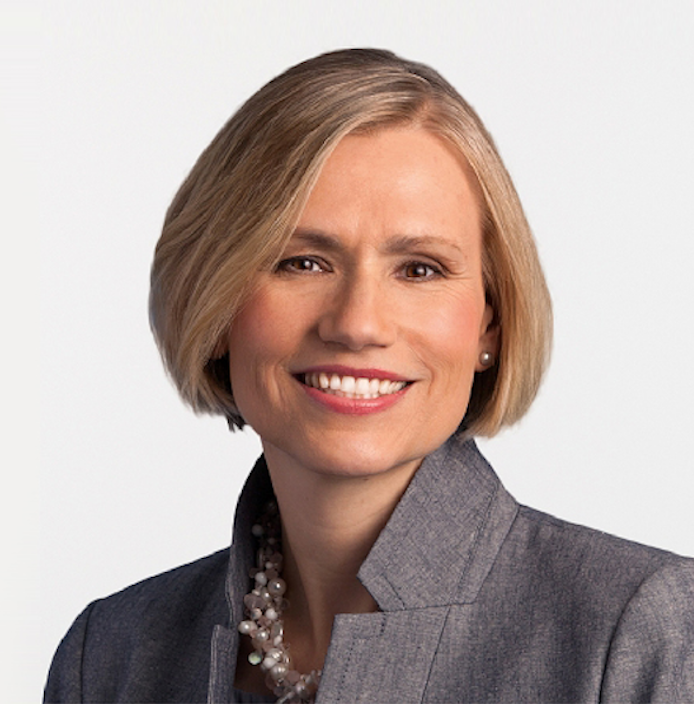Nine things to watch in November
by Kristina Hooper, Global Market Strategist, Invesco Ltd., Invesco Canada
Despite October’s reputation as a precarious month for stocks, the equity markets made it through the month without so much as a hiccup, let alone a correction. Last month commemorated the 30th anniversary of the 1987 market drop, but investors did not get spooked by the supposed “October effect.” With October behind us, it is now an opportune time to keep in mind some of the things we will want to look for in November and beyond.
1. The global recovery
The world’s economic growth continues to improve. Just last week we got more positive news about Europe. Not only does sentiment continue to improve, but eurozone gross domestic product (GDP) appears to have risen for the third quarter, with a flash estimate indicating 0.7% growth for the period – or 2.5% annualized – which is an improvement over the second quarter.1 In addition, the September unemployment rate for the eurozone fell to 8.9%; that’s down from 9.9% a year ago.1
Other areas around the world are also seeing growth accelerate, including Japan. Continued accommodative monetary policy – particularly from the U.S. Federal Reserve (Fed), which seems likely under Jerome Powell, U.S. President Donald Trump’s pick to lead the Fed – should help support this growth, particularly in emerging markets. We will want to pay close attention to inflation readings, as well as central banks’ attempts to raise inflation closer to their targets. A case in point is the European Central Bank, which has decided not to set an end date for quantitative easing (QE). Instead, it has said QE will continue until at least September. This makes sense given that, although the eurozone economy is growing, inflation is lagging: In October, core inflation grew at a pace of 0.9%, lower than its previous rate of 1.1%.1 This more forgiving approach to monetary policy should continue to support growth going forward.
2. U.S. wage growth
The U.S. employment situation report for October was released last Friday by the Bureau of Labor Statistics, and it showed continued strength in the labor market. While coming in under expectations, nonfarm payroll growth of 261,000 is still impressive – especially at this late stage in the labor market recovery. In addition, nonfarm payrolls were revised up for the previous two months, while the unemployment rate moved even lower. The one disappointment in the report was that wage growth moved lower, from 2.8% year over year to 2.4% year over year. This doesn’t look like it will stop the Fed from raising rates in December, but it is an issue that continues to perplex U.S. central bankers.
With so little slack in the economy – at least if your gauge of labor market slack is the unemployment rate – it can be difficult to explain why wage growth is relatively low. The reality is that this has been a very uneven and flawed economic recovery in the U.S. A significant portion of Americans, depending upon region and industry, did not really participate in the recovery; they may be employed, but they are “underemployed.” I believe that is one reason we have not seen strong wage growth yet. Clearly the labor market recovery continues to be strong, so the quality of the labor market should improve; we will want to follow that closely.
3. Germany’s continued efforts to form a coalition government
German Prime Minister Angela Merkel has still not been successful in negotiating a coalition government with two other political parties – an important step given her lackluster margin of victory in the September election. The coming days will be very important in determining whether or not they are able to agree on terms and succeed in forming a coalition. On Friday, Merkel made clear that she was still optimistic that a deal could be struck, but the other two parties did not appear as positive, with the leadership of the Free Democratic Party putting the odds of a coalition being formed at just 50-50.2
Not surprisingly, one key issue that has been difficult to reach agreement on is immigration. If Merkel is not able to strike a deal between the three parties, Germany will be forced to hold another parliamentary election. This is not only distracting, but it could provide disruptive if the far right party Alternatives for Germany were to win even more seats and it becomes even more difficult to form a coalition.
4. Canadian economic growth
Canadian GDP growth stalled over the summer. We are likely to see growth in the back half of the year come in much lower than growth in the first half of the year. We will want to follow North American Free Trade Agreement (NAFTA) talks closely, as failure to negotiate a new agreement will likely result in another headwind for the Canadian economy.
5. Negotiations around the proposed U.S. tax reform bill
The initial version of the tax bill was released last week. This is a comprehensive proposal with nearly 500 pages – and elements that have already proven unpopular with different constituencies. One industry that is unhappy with the bill is homebuilders; they object to the reduction in the mortgage interest deduction from $1 million to $500,000. Also, Congressional representatives from high-tax states are taking exception to the cap on the SALT (state and local tax) deduction. Also included in the bill is the elimination of the deduction for student loan interest, which is likely to receive significant opposition. But perhaps most troubling is the elimination of tax benefits for private activity bonds. This could hobble efforts to replace and rebuild infrastructure. We will want to follow the negotiations in Congress closely. Also, the repeal of the estate tax could be hotly contested and ultimately tossed, as it could add significantly to the deficit and is one element of the bill that will not benefit the middle class. As I’ve said before, this bill could look a lot different by the time all the negotiations and compromises have been completed.
6. The British currency
The Bank of England (BOE), stuck between a rock and a hard place last week, made the decision to raise rates for the first time in more than a decade. While there is no strong growth that the BOE needs to moderate, it is attempting to move the pound sterling higher in order to combat the relatively high level of inflation that the U.K. is experiencing as a result of Brexit-related currency shifts. However, the BOE intimated in its decision that it is not on any kind of significant tightening path, so sterling actually fell. This is problematic and suggests the potential for a stagflation scenario. We will want to follow sterling and inflation closely.
7. Jerome Powell
Markets breathed a sigh of relief with the nomination of Jerome Powell as the next Federal Open Market Committee (FOMC) chair. Powell is likely to maintain the monetary policy status quo set forth by the current chair, Janet Yellen, but may be more amenable to deregulation. This should be positive for markets, in my view, although a few economists have raised concern that Powell will be the first FOMC chair in decades to not be a trained economist. That means that, on monetary policy issues, the vice chair may have a stronger voice – so we will want to pay close attention to who is chosen for that role.
8. Chinese debt
In the past month, the People’s Bank of China’s outgoing governor, Zhou Xiaochuan, has been warning about high leverage in China’s financial system and the importance of financial reforms, hoping that those will become priorities coming out of the Chinese Communist Party Congress. While adamant that the Chinese financial system is still healthy, he warned that latent risks are accumulating. We will want to see if Chinese President Xi Jinping, fresh from consolidating his power in October’s Party Congress, will prioritize those reforms; in addition, I expect him to tackle monetary policy with a more seasoned and steadier hand this time around. We’re unlikely to see the significant swings in policy that we saw in Xi’s first five years in office. It will be critical for the People’s Bank of China to negotiate monetary policy effectively, given the risks of high debt levels and the need to support the Chinese economy without causing it to overheat.
9. The price of oil
After trading in a relatively narrow range for several months, crude oil prices have moved higher. This move resulted from OPEC output cuts as well as increased demand. However, oil prices could move still higher on increased disruption in the Middle East. The Saudi government has announced an anti-corruption initiative that has resulted in the arrest of a number of prominent Saudis, including members of the royal family. It is unclear whether this is a true anti-corruption drive or a political purge, but we will want to follow the situation closely. In addition, tensions are rising with Iran, with the Saudi kingdom blaming Iran for a launching a ballistic missile from Yemen last week. We will want to follow developments closely.
Subscribe to the Invesco Canada blog and get Kristina Hooper’s market reviews in your inbox.
This post was originally published at Invesco Canada Blog
Copyright © Invesco Canada Blog














